The Vibrant Body
Author: Alexander Lowen | Remarks addressed to the 17th IIBA International Conference | Date of publication: October 2023
Click here to read the article in PDF format ... | Clique aqui para ler o artigo em formato PDF ...
Only a person who is not afraid to express love can be reasonably secure that his heart will remain healthy.
I have been asked to send some greetings to the members of the Bioenergetic Institute attending this conference. I am happy to take the opportunity to do this, in that the Institute has had its fiftieth anniversary.
As you are aware, I was originally associated with Wilhelm Reich and the Institute of Orgonomy. A fundamental difference between my work and that of Reich is that I emphasize having the patient in a standing position. Reich always worked with his patients lying on the bed. Standing is an active position, and in it, the patient can literally feel his feet on the ground. As one patient remarked to me, “You put me on my feet.” The standing position and the lying down position complement one another.
Theoretically that standing position implies that the patient has the possibility of being in touch with the reality of his life. To further promote the feeling of being connected to the earth, the patient was asked to bent forward, allowing his finger tips to touch the ground. We called this the grounding position. It seemed to be a significant change in the therapy.
Unfortunately, it did not greatly help, because the person still did not usually feel the connection with the floor or the ground. The reason for this, as I learned later, is that in most cases people’s feet are relatively dead in a feeling way.
I tried many ways to help people feel their feet, for example by standing on one foot. But that does not charge the feet enough either. As many of you know, I also tried using a golf ball placed under the middle of the foot, and I also tried using a rubber roller. Neither of these did the job.
What I finally realized then is that people do not use their feet in an active way as they walk. Walking ON the feet is not to walk WITH the feet.
On one occasion I was watching some two or three-year-old children running. I saw the way in which their feet were actively moving. Then I also had the occasion to see a big wild bear in nature. As I watched it run, I saw that it used its feet in the same way as the children had. His feet were propelling him forward in the same way.
I realized that people use their feet in a passive way, as if they are something to stand on. In this case, walking is achieved by moving the legs but not the feet muscles themselves. The implication of this is that the muscles of the feet and the plantar surface of the feet are he active, functional basis of walking or running.
I developed an exercise I call “connecting the feet to the Earth” to activate this dynamic in my work with my patients. In this exercise, the feet are parallel and placed 8 to 10 inches apart, the patient bends over, places his hands on his feet or around the ankles and rocks using the muscles of the sole of the feet. The patient breathes out as he rocks forward, and breathes in as he rocks back. At the same time the patient is encouraged to press DOWN as he rocks and make sound. The strength of the exercise depends on how well the patient breathes, and the exercise will deepen the breathing as it is done. The exercise may be done 10 to 15 minutes.
This exercise activates the muscles of the feet and brings a charge of oxygen to these muscles. Of course, the muscles of the legs are activated as well. The exercise makes the feet and lower part of the legs begin to vibrate. If one continues this simple exercise, the charge in the feet and legs increases, and the legs begin to shake more strongly. The vibrations are accompanied by increased blood and oxygen flow.
The vibrations start as a tremor, and as it becomes stronger the vibrations extend upward into the upper legs and up into the body. The vibrations will develop from this point so that they extend through the pelvis and the body, and they will then become a convulsion which extends through the whole body.
This convulsion is not a haphazard reaction. It is an activation of the orgasm reflex. Although it is not connected directly to any genital excitation, it is a very pleasant experience. As you will recall Reich regarded this as an indication of the capacity for healthy sexual release in men and women, and he regarded this capacity as the basis of emotional health.
I experienced the orgasm reflex in my therapy with Reich. Later, feeling my deep love for my future wife during our sexual contact, I experienced a total profound orgasm. I have recorded this experience in my upcoming Autobiography, Honoring the Body, which is being edited now.
However, I was not able to retain this joyfulness. The reason I could not retain it is that I lost the connection with the earth, our ground. Many years later, I realized that I never have grounded my developed the deep connection between my feet and the earth.
In my work, I quickly evaluate how much energy and feeling a patient has, and how much energy there is in the lower half of the body. At the same time, I do not ignore the individual’s problems in daily life. Reich felt that there was a danger in starting work with the lower half of the body. He believed it was necessary to work from the head down because he had a deep far of the sexual energy that could be aroused.
Sexuality is the key to understanding human behavior. However, life is based on the organism’s connection to the earth. I begin therapy with the focus on the person’s connection to the ground as I have described. I came to see that human beings develop problems because they do not have a stronger connection the earth.
O corpo vibrante
Somente uma pessoa que não tem medo de expressar amor pode estar razoavelmente segura de que seu coração permanecerá saudável.
Nesta ocasião em que o Instituto de Bioenergética está celebrando seu 50º aniversário, tenho a satisfação de atender o pedido que me fizeram para enviar cumprimentos aos participantes dessa Conferência.
Conforme é conhecimento de todos, no início de minha carreira cu trabalhei com Wilhelm Reich e o Instituto de Orgonomia. Uma diferença fundamental entre o meu trabalho e o de Reich é que eu prefiro manter o paciente na posição ereta, de pé. Reich sempre trabalhou com o paciente deitado na cama. Conforme um paciente observou, dizendo-me: “Você me coloca sobre meus pés”. As duas posições, de pé e deitado, se complementam mutuamente.
Teoricamente, a posição ereta implicitamente indica que o paciente tem a possiblidade de estar em contacto com a realidade de sua vida. Para incrementar ainda mais o sentimento de estar conectado com a terra, pedimos ao paciente para se inclinar para a frente, de modo que as pontas dos dedos toquem o solo. Esta posição recebe o nome de posição de grounding. Parece que ela trouxe uma importante modificação na terapia.
Infelizmente, não foi de grande ajuda, porque a pessoa mesmo assim não consegue normalmente sentir a conexão com o chão ou com o solo. Mais tarde descobri que a explicação para isto é que em muitos casos os pés das pessoas são relativamente “mortos”, na capacidade de sentir. Tentei muitas maneiras de ajudar as pessoas a sentirem os seus pés, como exemplo içar num pé só. Mas isso também não carrega suficientemente os pés. Como muitos de vocês já sabem, também tentei usar uma bola de golfe colocada sob o centro da sola do pé, e ainda tentei usar um rolo de borracha. Mas nada disso funcionou.
Finalmente compreendi que as pessoas não usam os pés numa forma ativa, quando caminham. Caminhar SOBRE os pés não significa caminhar COM os pés.
Certa vez eu estava observando algumas crianças de dois ou três anos de idade, que estavam correndo. Vi o modo como os pés delas estavam se movendo ativamente. E também tive a oportunidade de observar um urso selvagem correndo, à solta na natureza, e percebi que o urso usava os pés da mesma maneira que as crianças que corriam. As suas patas estavam impulsionando para a frente, da mesma maneira.
Concluí que as pessoas usam dos pés de modo passivo, como se fosse uma base sobre a qual devem ficar de pé. Neste caso, o ato de caminhar é realizado pelo movimento das pernas, mas não pelos músculos dos próprios pés. A conclusão a que cheguei é que os músculos dos pés e a superfície plantar dos pés exercem a base ativa funcional do ato de caminhar ou de correr.
Criei um exercício que chamo de “conectar os pés com a terra”, para ativar esta dinâmica na terapia com meus pacientes. Neste exercício os pés ficam paralelos, a uma distância de 20 a 25 cm um do outro, o paciente inclina-se para a frente e coloca as mãos nos pés ou em volta dos tornozelos e balança-se usando os músculos da sola dos pés. O paciente expira quando vai para a frente, e inspira quando vai para trás. Ao mesmo tempo ele é instruído para fazer pressão para BAIXO enquanto balança, e deve emitir sons. A energia obtida com este exercício depende da qualidade do movimento respiratório do paciente, e o exercício vai tornando a respiração mais profunda. A duração do exercício pode ser de 10 a 15 minutos.
Este exercício ativa os músculos dos pés e transporta uma carga de oxigênio para esses músculos. Naturalmente também são ativados os músculos das pernas. O exercício provoca vibração nos pés e na parte inferior das pernas. Se a pessoa continua fazendo este exercício simples, a carga nos pés e nas pernas vai crescendo, e as pernas começam a vibrar mais fortemente. As vibrações são acompanhadas por um fluxo maior de sangue e de oxigênio.
As vibrações começam como um tremor, e quando o tremor vai ficando mais forte as vibrações se estendem subindo pela parte superior das pernas e até o corpo. A partir deste ponto as vibrações passam através da pélvis e do corpo e acabam se transformando numa convulsão que domina todo o corpo.
Esta convulsão não é uma reação casual. Trata-se da ativação um reflexo de orgasmo. Embora não esteja diretamente conectada com qualquer excitação genital, é uma experiência muito prazerosa. Talvez você se lembre de que Reich considerava isto como um sinal da capacidade para uma liberação sexual saudável nos homens e nas mulheres, e considerava tal capacidade como a base de saúde emocional.
Quando fiz terapia com Reich, eu experimentei o reflexo de orgasmo. Mais tarde, sentido o amor profundo que nutria por minha futura esposa durante nosso contato sexual, experimentei um orgasmo profundo total. Na minha autobiografia, Honoring the Body, que está no prelo, eu relatei esta experiência.
No entanto, eu não consegui reter este sentimento de plenitude. E isso porque eu perdi a conexão com a terra, nosso ground. Muitos anos depois, percebi que eu nunca tinha enraizado (grounded) na terra os meus sentimentos através dos meus pés. Só recentemente é que percebi que eu nunca havia desenvolvido a conexão profunda entre meus pés e a terra.
No meu trabalho, faço uma rápida avaliação da quantidade de energia e de sentimento que o paciente possui, e quanta energia ele apresenta na parte inferior do seu corpo. Ao mesmo tempo, levo em consideração os problemas do indivíduo no cotidiano. Reich achava que era perigoso começar o trabalho com a parte inferior do corpo. Acreditava que era necessário trabalhar a partir da cabeça para baixo, porque ele tinha muito medo d energia sexual que podia ser despertada.
A sexualidade é a chave para compreender o comportamento humano. No entanto, a vida se baseia na conexão do organismo com a terra. Eu começo a terapia focalizando a conexão da pessoa com o solo, conforme já descrevi acima. Acabei concluindo que os seres humanos desenvolvem problemas porque não têm uma conexão mais forte com a terra.









![The vibrant body by Alexander Lowen [EN] [PT]](/images/Article_EN_PT_TheVibrant_Lowen.png)


